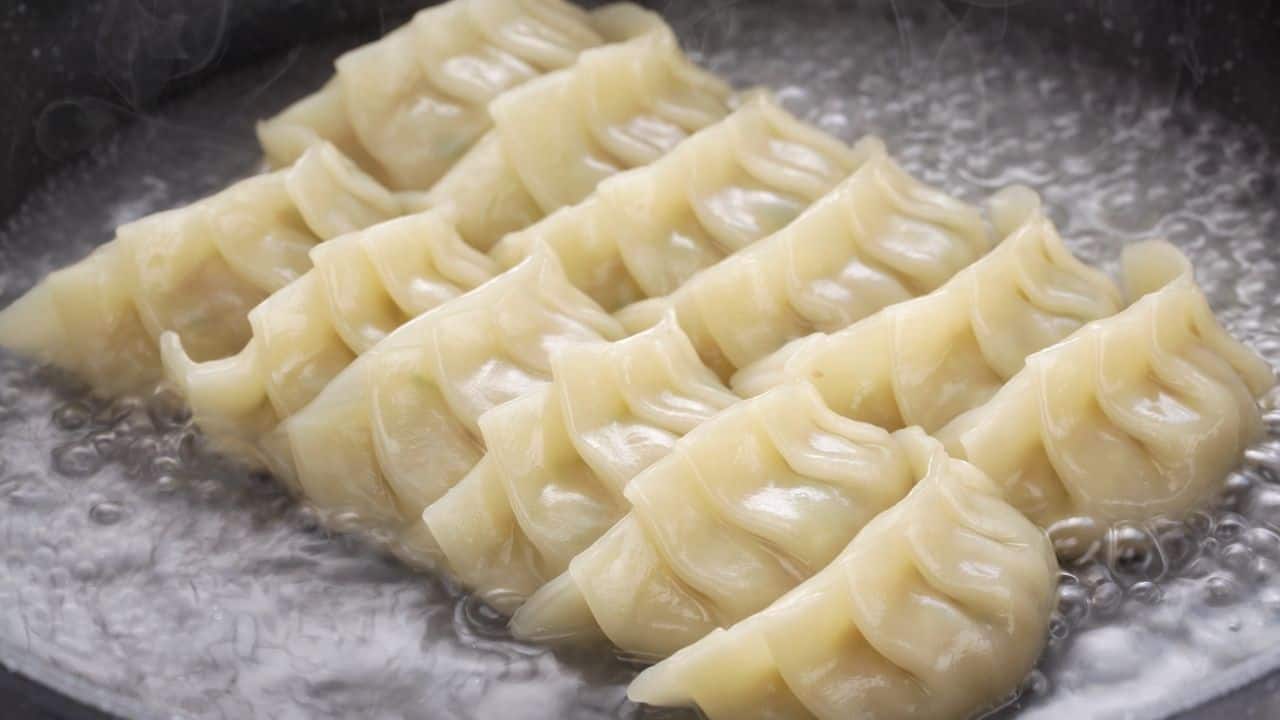Here is your ultimate guide on how to cook frozen gyoza. Depending on your preference and the type of gyoza you are cooking, there are a number of ways to cook this traditional Japanese dumpling. However, it can get confusing when you don’t know which method to use.
Whether you love crunchy, crispy gyoza or the slightly healthier option of boiled or steamed gyoza, there will be a method in this article to suit your tastebuds and cooking skills.
What Is Gyoza?
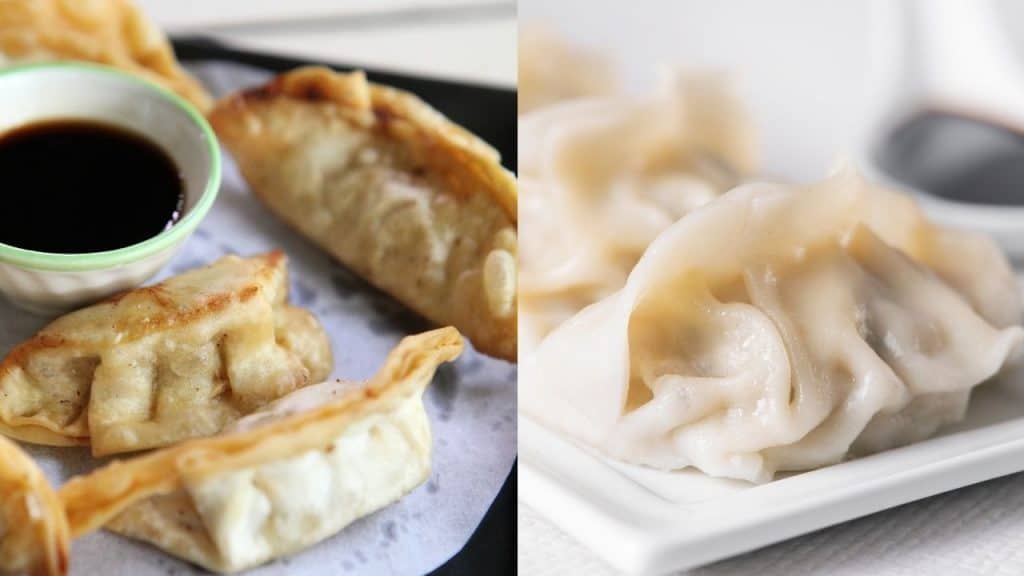
Gyoza is a traditional Japanese dish that is sometimes referred to as Japanese dumplings. However, these dumplings are thought to have been originally invented in China a long time ago, where they were called jiaozi. It consists of small pastry wraps made with wheat flour, salt, and oil, surrounding various fillings, which are then cooked and served hot.
Popular filling choices include:
- Fresh vegetables
- Minced pork
- Mushrooms
- Cabbage
- Prawns and seafood
- Tofu (for a vegan option)
Gyoza is often served with a dipping sauce, such as a simple dish of soy sauce, or even a more complex mix with soy sauce, rice vinegar, chili flakes, fresh garlic and ginger, green onions, and sesame oil.
Gyoza also makes a great side dish or starter option. In Japan, it is commonly served alongside ramen or rice. Some gyoza are also served with simple soups or broths for a hearty, warming meal.
There Are Four Main Types Of Gyoza:
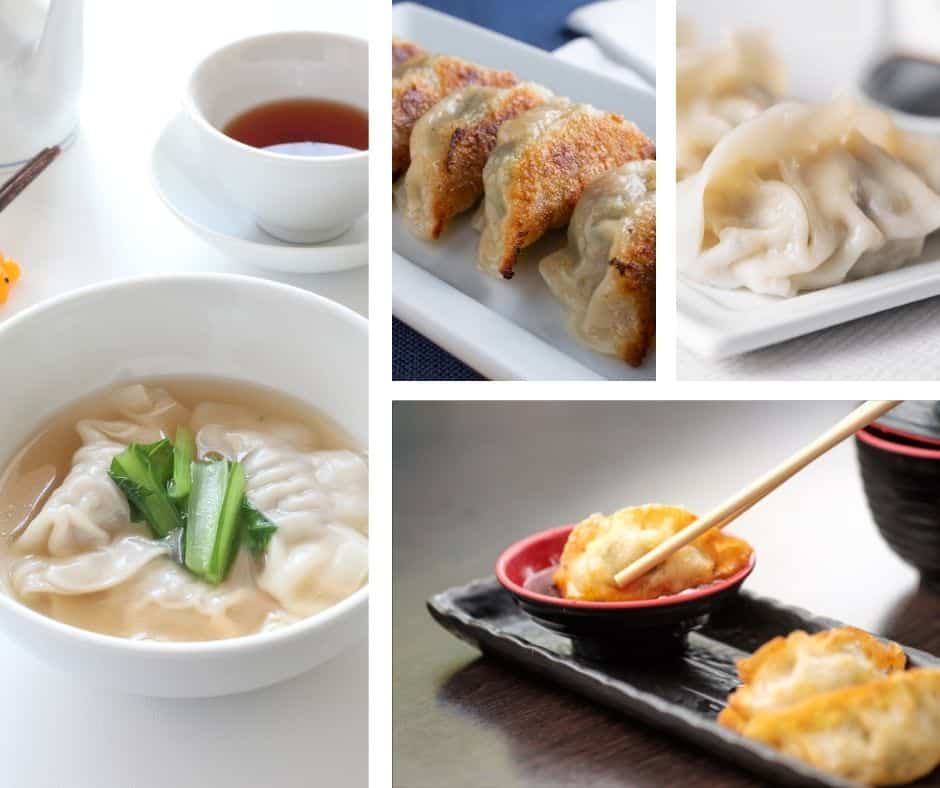
- Yaki-Gyoza is the most common gyoza in Japan, which resembles the ‘potsticker’ dumping of China. The Yaki-Gyoza is pan-fried.
- Age-Gyoza is similar to the Yaki-Gyoza, except they are deep-fried.
- Mushi-Gyoza is traditionally cooked in a bamboo steamer basket.
- Sui-Gyoza is boiled in a thin soup or water, which leads to a chewier, tender dumpling without the crispy shell.
5 Ways To Cook Frozen Gyoza
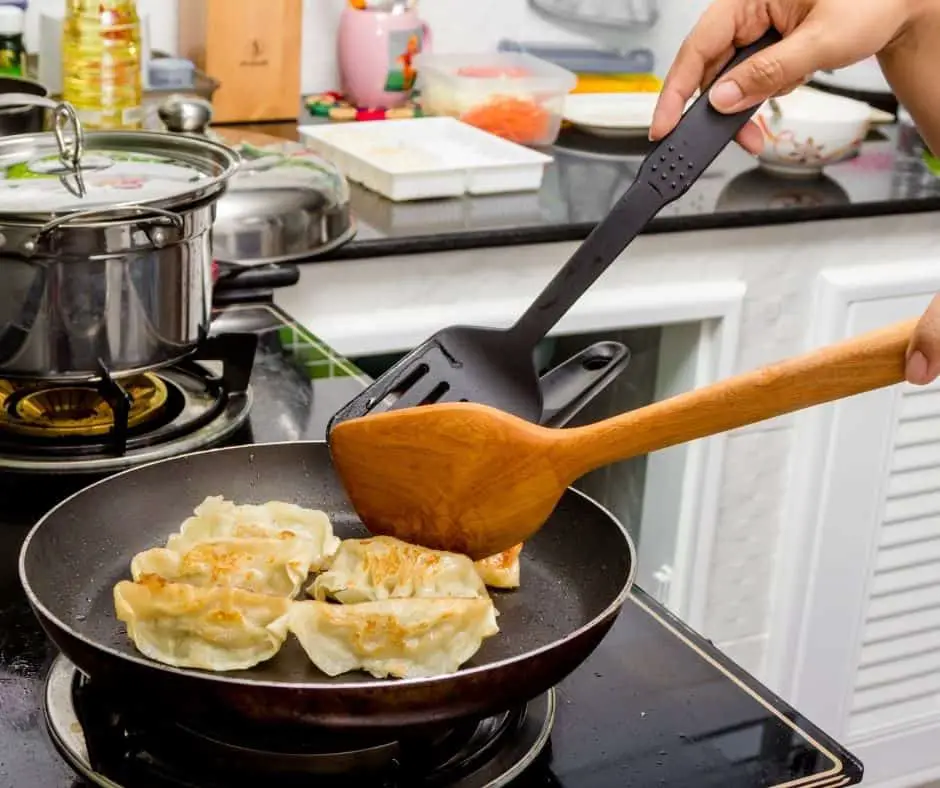
Here are the four most popular ways to cook gyoza from frozen. Each of these techniques will yield a slightly different texture and flavor. It’s important to choose a technique that will suit the type of gyoza you are cooking.
You may also wish to choose a method depending on other factors such as your dietary requirements and available kitchen equipment.
1. Deep Frying
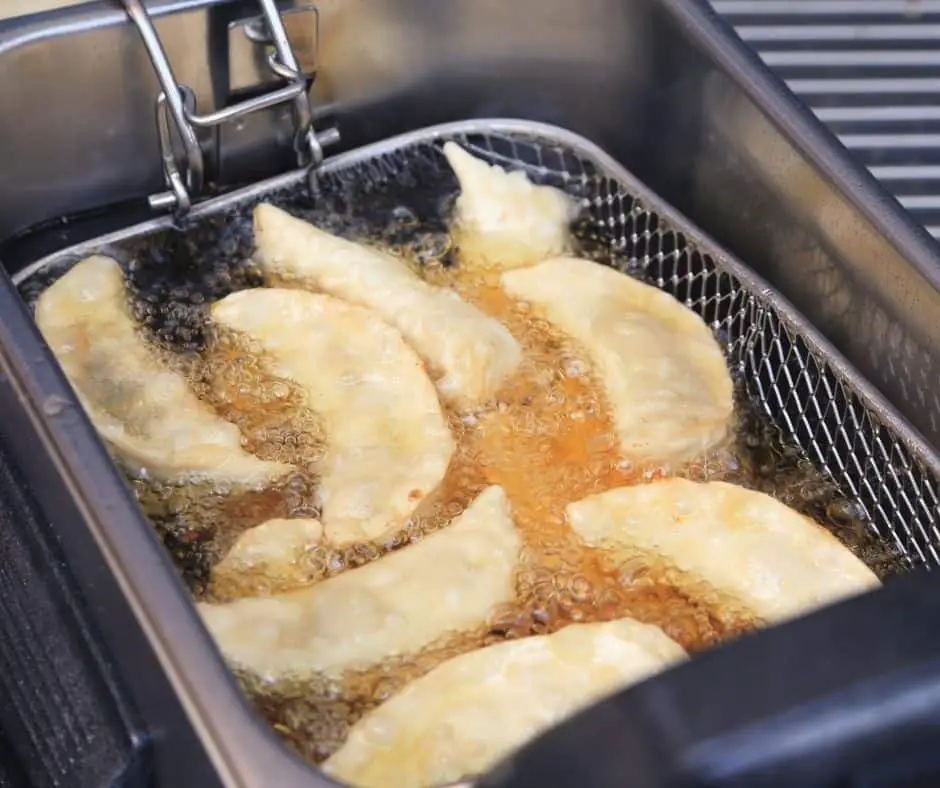
Anyone who loves a crispy dumpling should consider deep-frying their gyoza. Deep frying is the best way to achieve Age-Gyoza, which has perfectly crispy outer shells. Leading to a satisfying crunch when you take a bite of the cooked dumpling.
Also, deep-frying will be your best bet if you want to cook your gyoza from frozen. This is great when you are serving them as a quick starter or side when hosting a dinner party as they won’t need a lot of time to cook before serving.
For this method, you will need an oil suitable for deep-frying, such as peanut oil, avocado oil, sunflower oil, rapeseed/canola oil, a deep fryer, or a sizeable pot or pan.
Read Also: These Are the Absolute Best Oils For Frying!
You may also wish to use a thermometer to ensure you achieve the desired temperature of your oil before adding in your gyoza.
Method:
- Heat the oil between 325-375°F (165-190°C).
- Slowly add your gyoza to the oil straight from the freezer (do not thaw).
- Fry the gyoza for 2-3 minutes and serve.
- Feel free to remove one dumpling and check if it is ready before removing the whole batch. You are looking for a crispy, dark golden brown color on the outside, and the fillings should steam when cut open.
Top Tip:
If you do not have a thermometer, a great trick you can use to test if the oil is ready is to use a wooden spoon. Insert the end of your wooden spoon into the oil and monitor if any bubbles appear around the wood. If bubbles form and start to float to the surface of the oil, the oil is ready for deep frying.
2. Shallow Frying
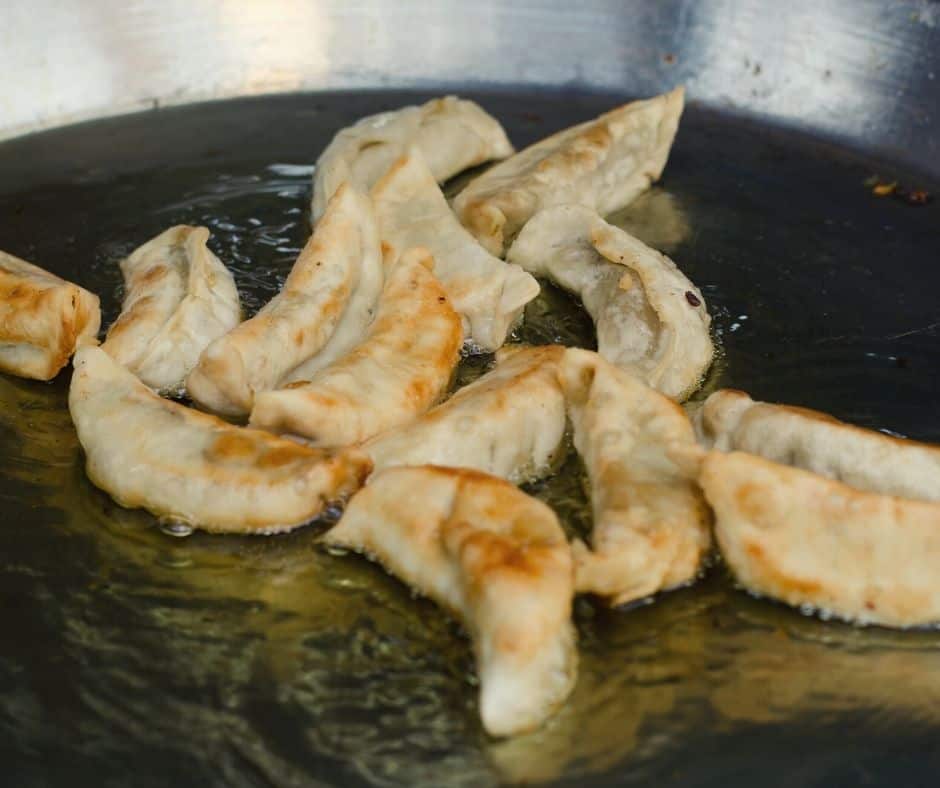
Shallow frying or pan-frying is another great way to get crispy gyoza without using as much oil as deep frying. It is generally safer than deep frying, although care should always be taken when handling hot oil.
Method:
- Heat 10-15 tbsp oil in a frying pan on medium-high heat. In shallow frying, the oil should cover about 1/3 of the height of the food but not be fully immersed in it.
- Carefully add your dumplings into the oil.
- Cook each side for about 2-3 minutes.
- Remove the gyoza when each side is cooked and golden brown.
3. Steam-Fry

Steam frying is a typical Japanese cooking method that combines both frying and steaming. At first, you fry the frozen dumplings with a little oil, then add a dash of water to the pan and cover with the lid to steam through, then slightly fry them once again after the water has evaporated. Steam-frying creates a lovely, extra-crisp bottom crust.
Method:
- Heat 1-2 tbsp oil in a frying pan on medium-high heat.
- Carefully place your dumplings into the oil.
- Cook for one minute in the hot oil.
- Finally, add a bit of water to the pan to cover the bottom one-third of the gyoza.
- Add the lid to allow for steam to build up. Once the lid is on, turn the heat down to medium-low and steam for 5-10 minutes.
- Once the water has fully evaporated, fry for another few minutes and serve.
4. Boiling
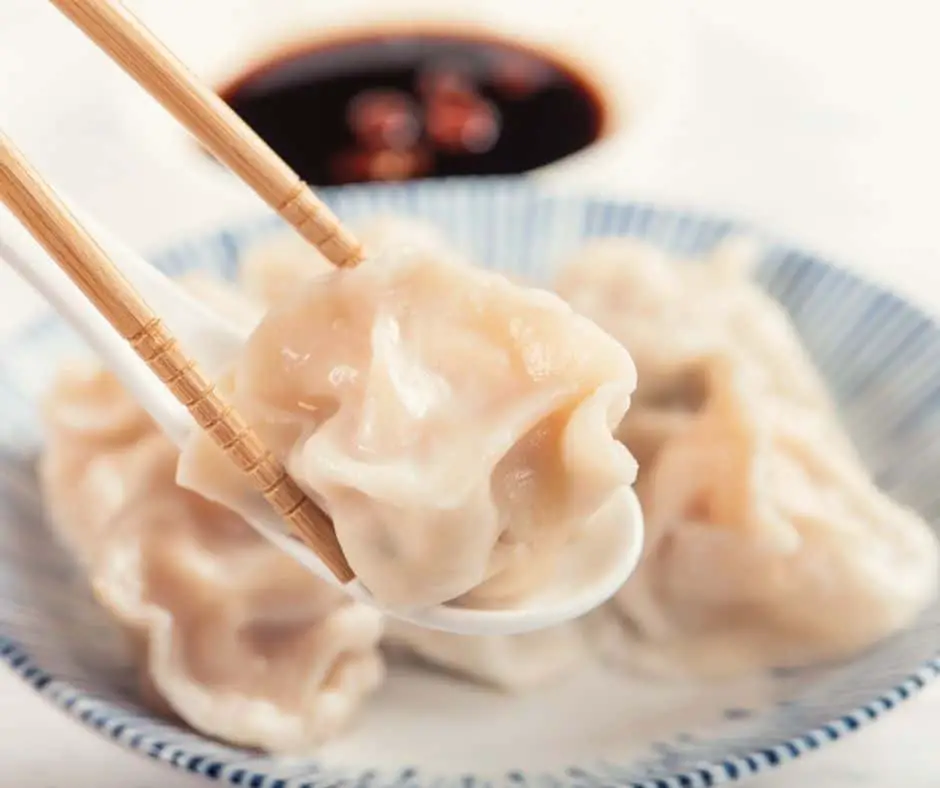
This is the best way to cook tender Sui-Gyoza, which is perfectly served in soup, broth, or hot water.
Boiling and steaming are generally considered the healthiest ways to cook most types of dumplings because you are not drenching them in oil. If you are a beginner in the kitchen and looking for the easiest way to cook gyoza, boiling may be your best option. As there is less risk of injury from the hot oil it’s less likely that you will ruin it.
Method:
- Fill a large pan just over halfway with water on medium-high heat and bring to a boil.
- Carefully drop frozen gyoza in the water (you do not need a lid). If you see dumplings hovering around the sides of the pan, give it a nudge back into the center.
- When the volume of water drops below one-third of the height of the pan, simply add more water and allow the water to come back to a boil.
- Remove your gyoza using a fine mesh strainer or large spoon with drainage holes and check they are cooked thoroughly.
5. Steaming
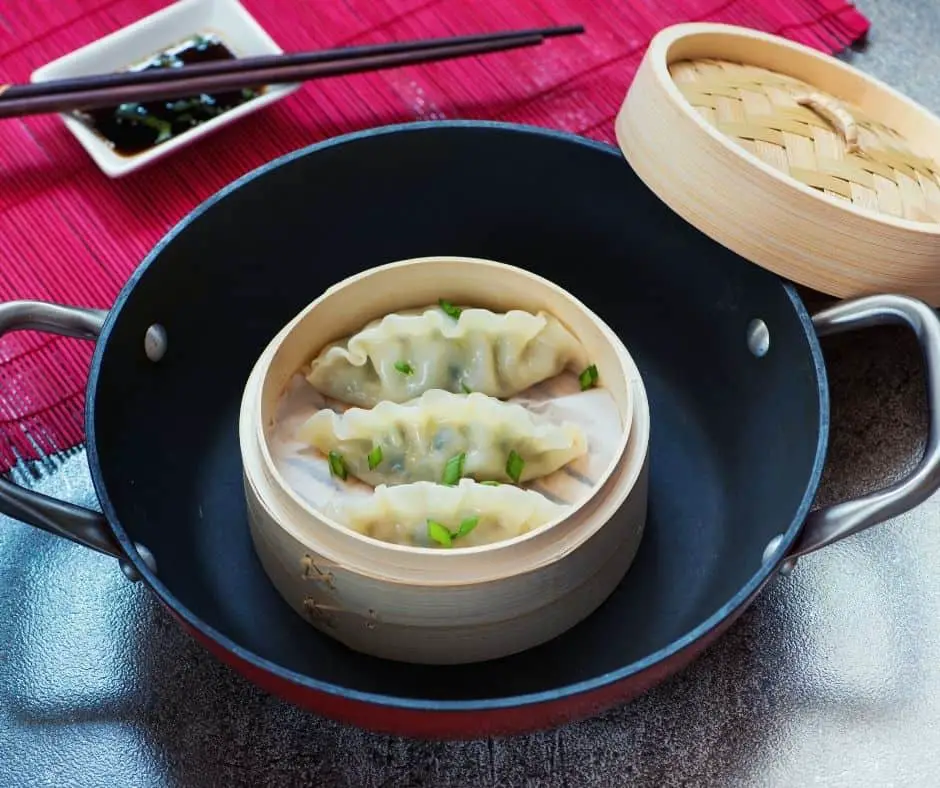
Steaming will leave your gyoza deliciously soft and chewy in texture and is the best way to cook Mushi-Gyoza. Steaming is a gentle cooking method and is the best option for preserving flavors and maintaining the nutrients in the fillings.
Using Bamboo or Metal Steam Basket:
- Fill a large wok halfway full of water and bring to a boil on high heat.
- Turn the heat to low and place the steamer rack in the water. Make sure the water is not too high to touch the dumplings during steaming.
- Line your steamer with parchment paper with holes, non-stick liner, or spray with oil, so the dumplings don’t get stuck. Alternatively, you can also line your basket with a layer of lettuce or cabbage leaves.
- Place the frozen gyoza on a single layer of the bamboo or metal steamer (make sure to put the lid on).
- Steam for 10-15 minutes.
Using Standard Kitchen Appliances:
- Take a large wok or saucepan with a lid.
- Place a bowl in the middle of the wok/pan and add water around the bowl till the water level is halfway up the outside of the bowl.
- Bring water to a boil.
- Assemble your gyoza on a plate and put this on top of the bowl.
- Finally, put the lid on and boil the water at low-medium heat to allow the gyoza to steam inside the wok for 10-15 minutes.
Top Tip:
Make sure the dumplings aren’t touching one another; otherwise, they may get stuck to each other and split open while removing them from the steamer; also, they won’t cook evenly.
Can You Microwave Frozen Gyoza?
If you live in student accommodation, a small flat, or are traveling with limited cooking appliances, you may have no option but to cook your gyoza in the microwave.
Although this isn’t the best option, it is possible to cook your gyoza in the microwave. Place the dumplings in the microwave-safe bowl and cover them halfway with water. Cover with another microwave-safe plate and microwave on high power for about 3-5 minutes.
Read Also: Do Air Fryers Use Oil? Here Is What You Should Know!
Conclusion
Hopefully, you now feel prepared to cook frozen gyoza at home. Whatever method you decide to use, your dumpling will be cooked to perfection.
